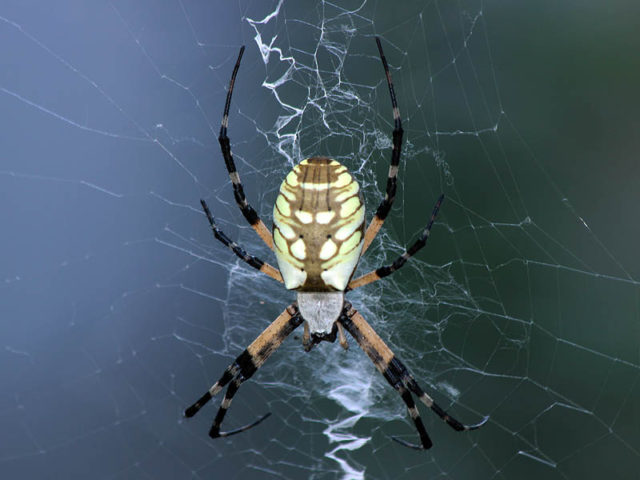
If you spend anytime in the North Texas woods during our long hot summers then you have surely run into one of these–a Black and Yellow Garden Spider. The females of this species (Argiope aurantia) are quite large–typically an inch or so in body length. If you include the leg-span in your measurements, the size of the spider can approach 4 inches tarsus tip to tarsus tip.
Black and Yellow Garden Spiders belong to the family of spiders known as orb-weavers–a name descriptive of manner in which their webs are constructed. Spanning and distance of two or more feet, the web is built around a framework of spokes radiating from the center. The spokes support web strands spiraling away from the hub. The result is a mesh of sticky netting that the spider uses to capture its prey.
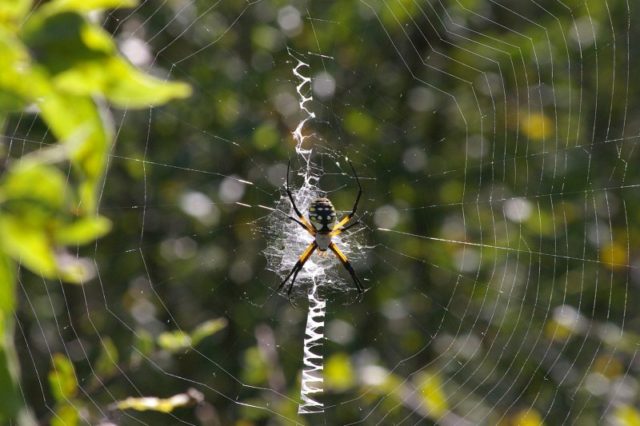
The Black and Yellow Garden Spider is inclined to build its webs in narrow, open areas that are well suited to funneling prey into its silky trap. By unfortunate coincidence, many hiking trails used by people match this set of criteria to a tee. It is no surprise, then, that a sizable number of outdoor enthusiasts first come to know the Black and Yellow Garden Spider shortly after they run headlong into the sticky mess that is an orb-weaver web.
Luckily, Black and Yellow Garden Spiders are not aggressive toward people. They prefer retreat to confrontation, and must be persistently disturbed before they will bite. When they are pushed too far and do happen to bite, their venom produces a reaction somewhat akin to a bee sting. A bite might cause a little pain, but it is generally not serious. If bitten, you will survive.
The spider’s web, however, will not survive an encounter with a person. When a person leaves the scene covered head and hands in sticky webbing, the spider will need to rebuild–an energy and resource intensive operation. The best case scenario for all involved is to avoid contact with the Black and Yellow Garden Spider’s web whenever possible. Keep an eye out when hiking!
So, now we know that, despite the large size of this spider and its web, it is not capable of ensnaring and preying on people. Instead, the Black and Yellow Garden Spider feeds on mix of flying insects. Moths, butterflies, and dragonflies are regularly captured. Even large and powerful insects like grasshoppers can be secured if they are handled promptly.
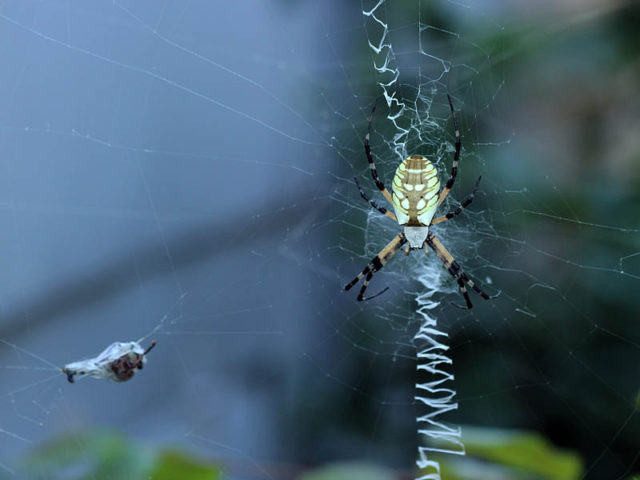
Typically, the Black and Yellow Garden Spider stations itself head down on the web’s hub. There, the she waits for the tell-tale vibrations that indicate that an insect has been ensnared in the sticky strands. Once these vibrations are detected, the spider rushes over and envenomates its prey. The injected poison disables the hapless victim, allowing the spider to quickly cocoon the insect in silk for later consumption.

This is an effective technique for capturing and subduing prey. There is even evidence that these big spiders can handle larger and more dynamic prey–like lizards–on occasion. Here’s is how Wikipedia describes the garden spider’s web construction and hunting prowess…
Females of the species are the most commonly seen in gardens. Their webs are usually characterized by a zigzag shaped stabilimentum (an extra thick line of silk) in the middle extending vertically. The spiders spend most of their time in their webs, waiting for prey to become ensnared. When prey becomes caught in the web, the spider may undulate the web back and forth to further trap the insect. When the prey is secure, the spider kills it by injecting its venom and then wraps the prey in a cocoon of silk for later consumption (typically 1–4 hours later). Prey includes small vertebrates, such as geckos and green anoles, as well as insects
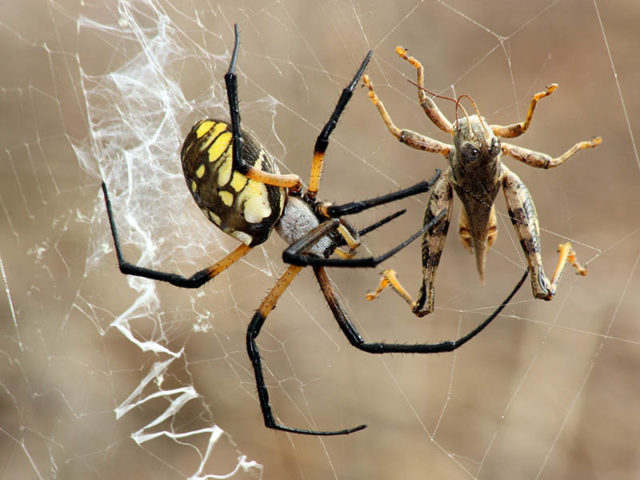
In order to ensnare something as capable as a lizard, the conditions surrounding the capture would likely need to be near optimal in favor of the spider. A little serendipity would be required.
Now, let’s suppose conditions were even better than near optimal. What if all factors worked in the spider’s favor? Let’s imagine the webbing was a little stronger and stickier than normal. That the spider is bigger and faster than ordinary. That its venom was slightly more potent, and that its victim was possibly weakened somehow–maybe by inexperience, injury, or illness. What could a Black and Yellow Garden Spider capture under circumstances like these?
Well, the pictures below–shared with us by Dick Schoech of Arlington, Texas–suggest that even some birds need to beware of the Black and Yellow Garden Spider. These photographs were taken in Dick’s backyard, and they illustrate a Ruby-throated Hummingbird killed and cocooned by one of the big orb-weavers.
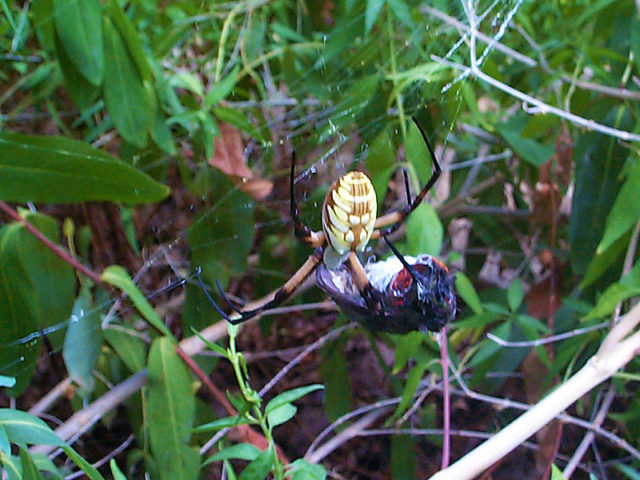

Hummingbirds use spider silk in the construction of their nests–a habit that may make them more vulnerable to this type of predation from time to time. Although the timestamp on these pictures indicate that it’s late in the season for nest building, it is possible this hummingbird contributed to its own demise by attempting to pilfer strands of silk from this spider’s web.
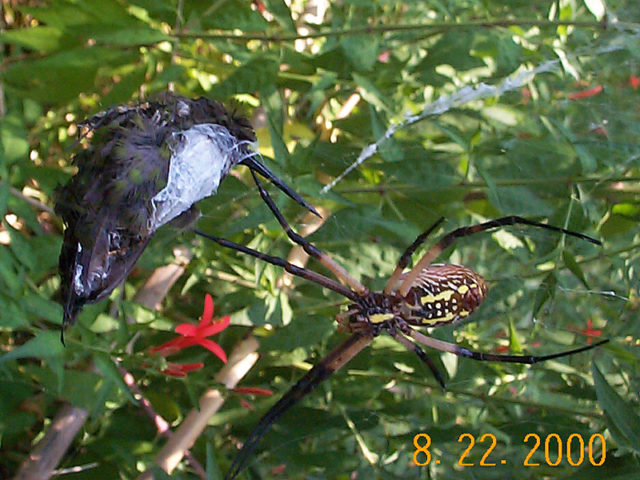
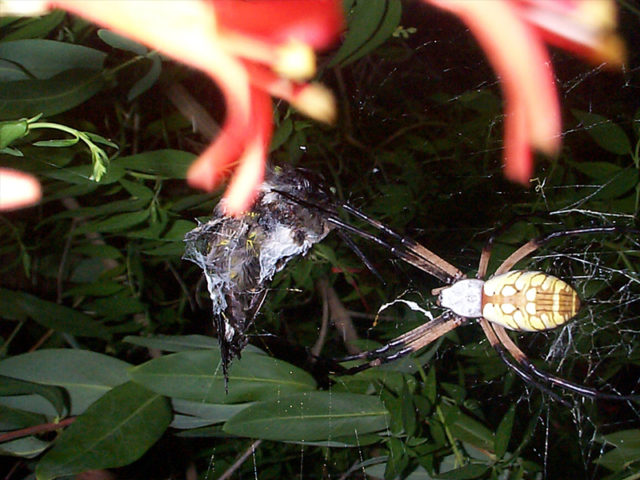

This is truly a remarkable series of photographs, recording what is surely an extremely rare occurrence. We are so thankful that Dick had the foresight to document the observation with pictures, and we are even more grateful that he chose to share them with all of us. Great stuff!


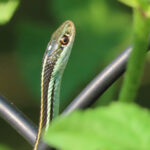
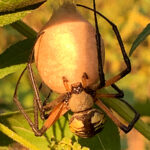
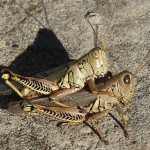
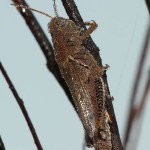
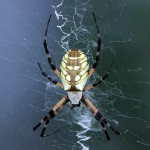
Beautiful web photographs. I love documenting the ephemeral.
I’ll bet the Hummingbird never imagined for a moment that it meet it’s demise by being snared and eaten by a spider nearly as large as itself.